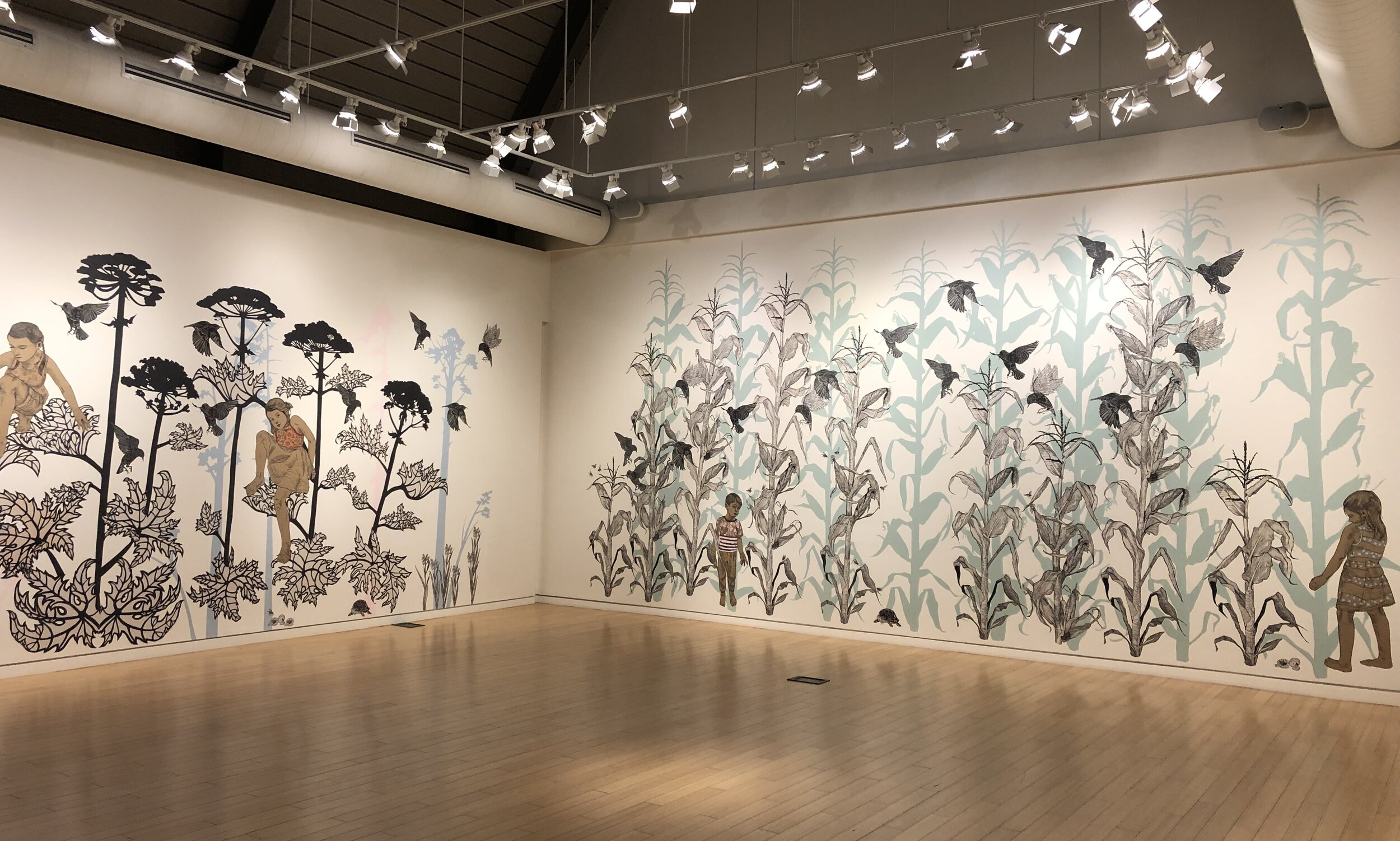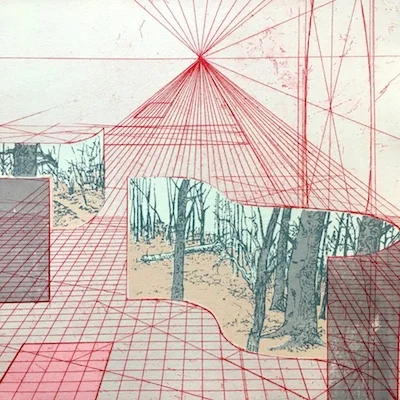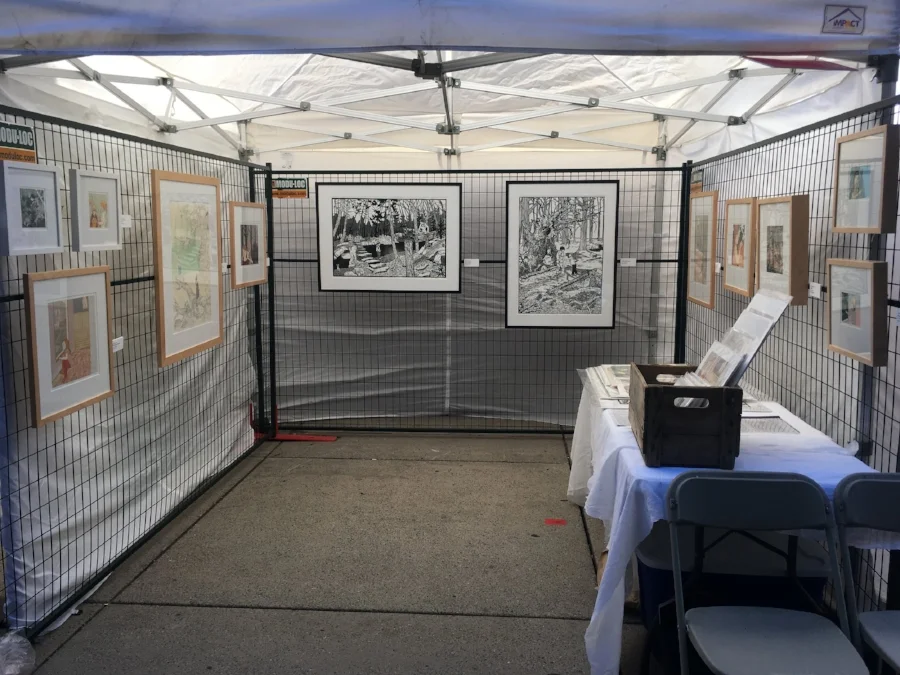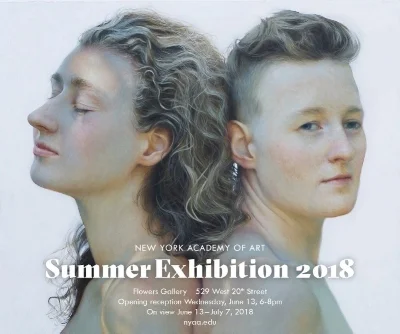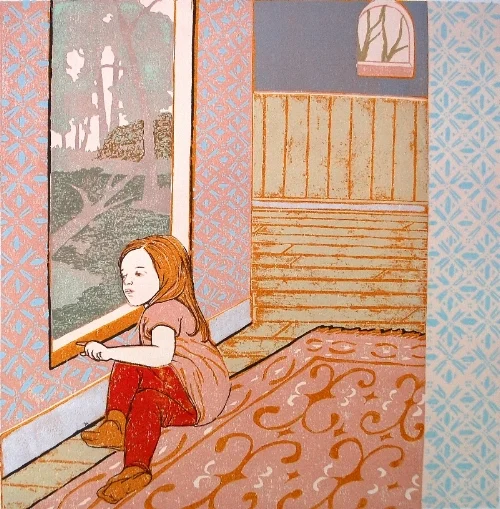October 19 - December 7, 2019
Wasteland/Wanderland depicts children as the explorers of a beautiful, yet dystopian setting. Navigating a tangled landscape filled with genetically modified and invasive species, the figures are presented as both tenacious and vulnerable. Drawing upon archetypes from children’s literature, this narrative installation captures an experience of childhood as it relates to place: Place as geography, place within a family structure, and the interiority that forms one’s sense of identity.
The installation examines the disruptive impact non-native, genetically modified and invasive species can have in the way that they change the identity of a place. This disruption could occur in the ecology, or the visual or sensory character of a place, or in the way that we perceive elements within the environment as either dangerous or harmful.
The images in the prints that comprise the installation are specific, but they are also meant to serve as archetypes. Blanding’s turtles are an animal currently under threat in a wetland near the artist’s home, where the construction of a new casino is underway. The fish imagery is generated from drawings made of AquaBounty Salmon: the first genetically modified animal meant for human consumption. The birds depicted are starlings, birds introduced to North America in 1890, when a wealthy amateur zoologist named Eugene Schieffelin released 60 starlings into Central Park, along with dozens of other non-native birds. His goal was to introduce every bird mentioned in Shakespeare’s poems and plays to North America. The birds represent the contrast between a benevolent, Romantic impetus, and the grave unintended consequences of the intervention. We have strong feelings about whether animals are nuisances or desirable, and culturally we tend to cast animals in roles of villains, heroes, or victims.
Giant Hogweed is an example of the consequences of introducing species into a landscape for the purposes of cultivation. This plant grows at the edge of forests and shades out all its neighbors. It causes horrific burns to skin if touched. Wasteland/Wanderland exploits the absurdity of the scale relationships between the figures and this plant. Although the scale relationships are accurate, the figures appear like Alice in the Wonderland garden, where the flowers were also cast as sinister and villainous.
Wasteland/Wanderland was inspired by a sense of escapism as it relates to the exploration of a place, and by the profound beauty of the Ontario landscape. It captures the dark character sometimes taken on by “the woods” in children’s imaginative play, and a memory of the childhood thrill of being on the edge of safety.
